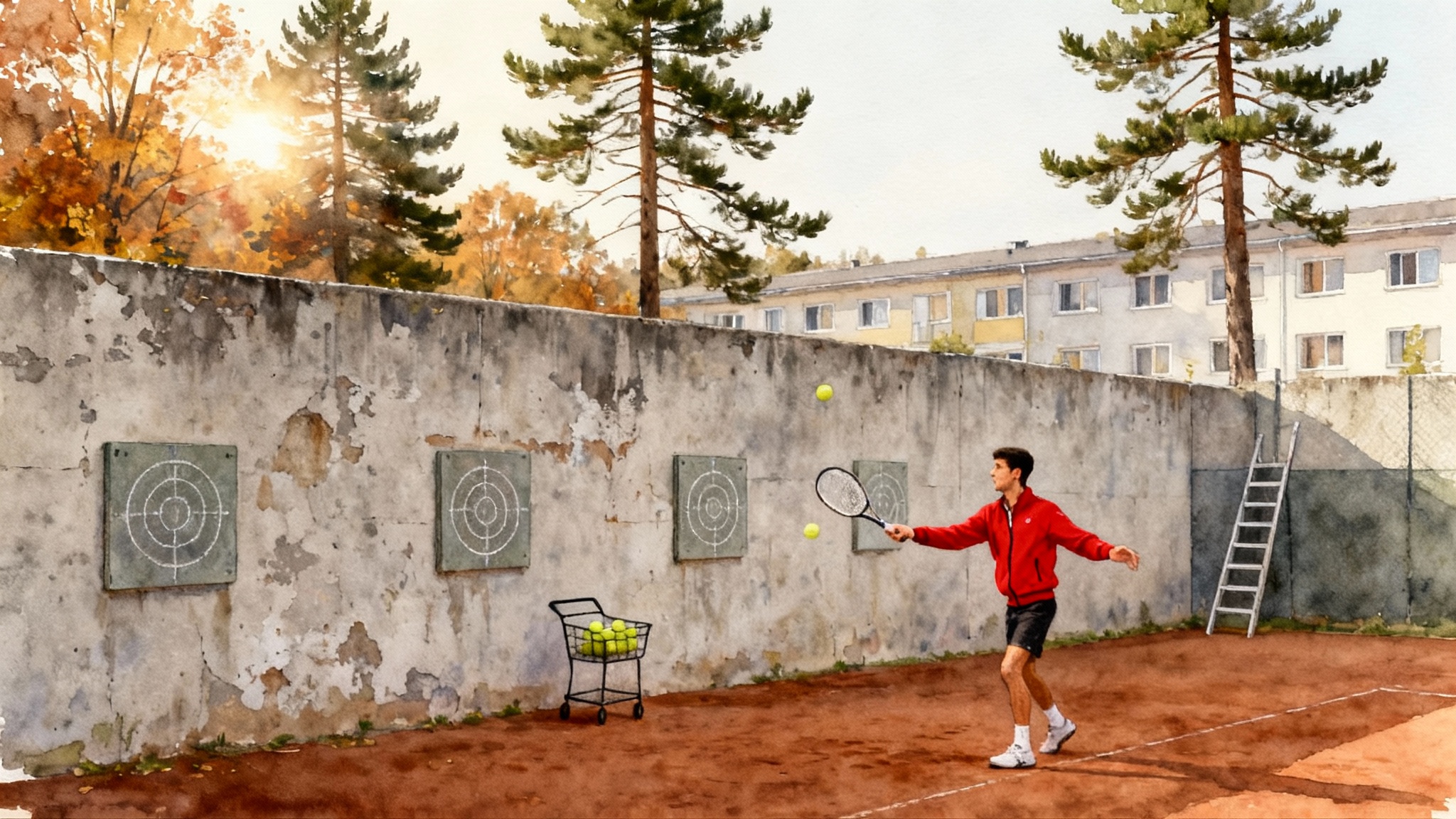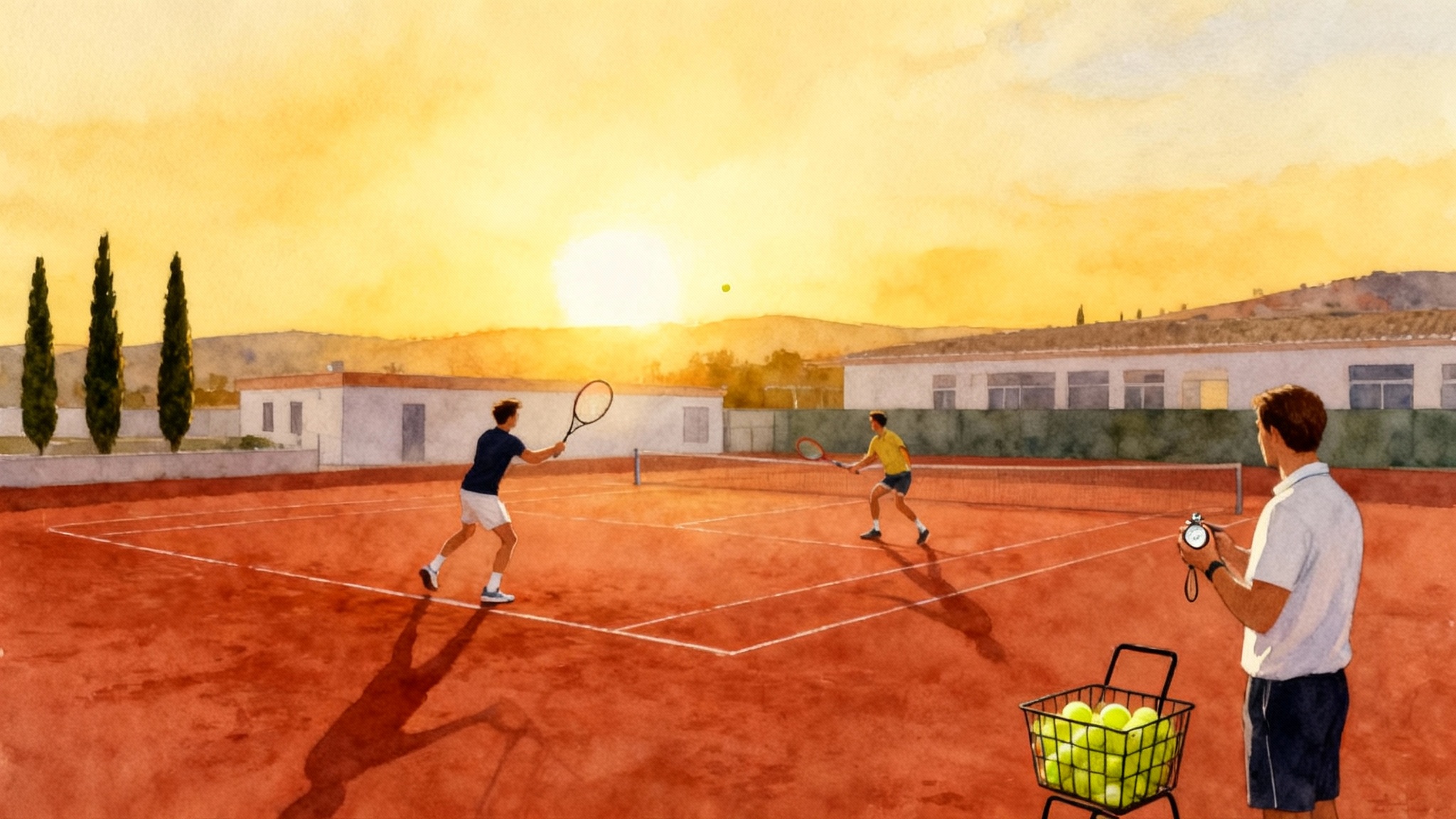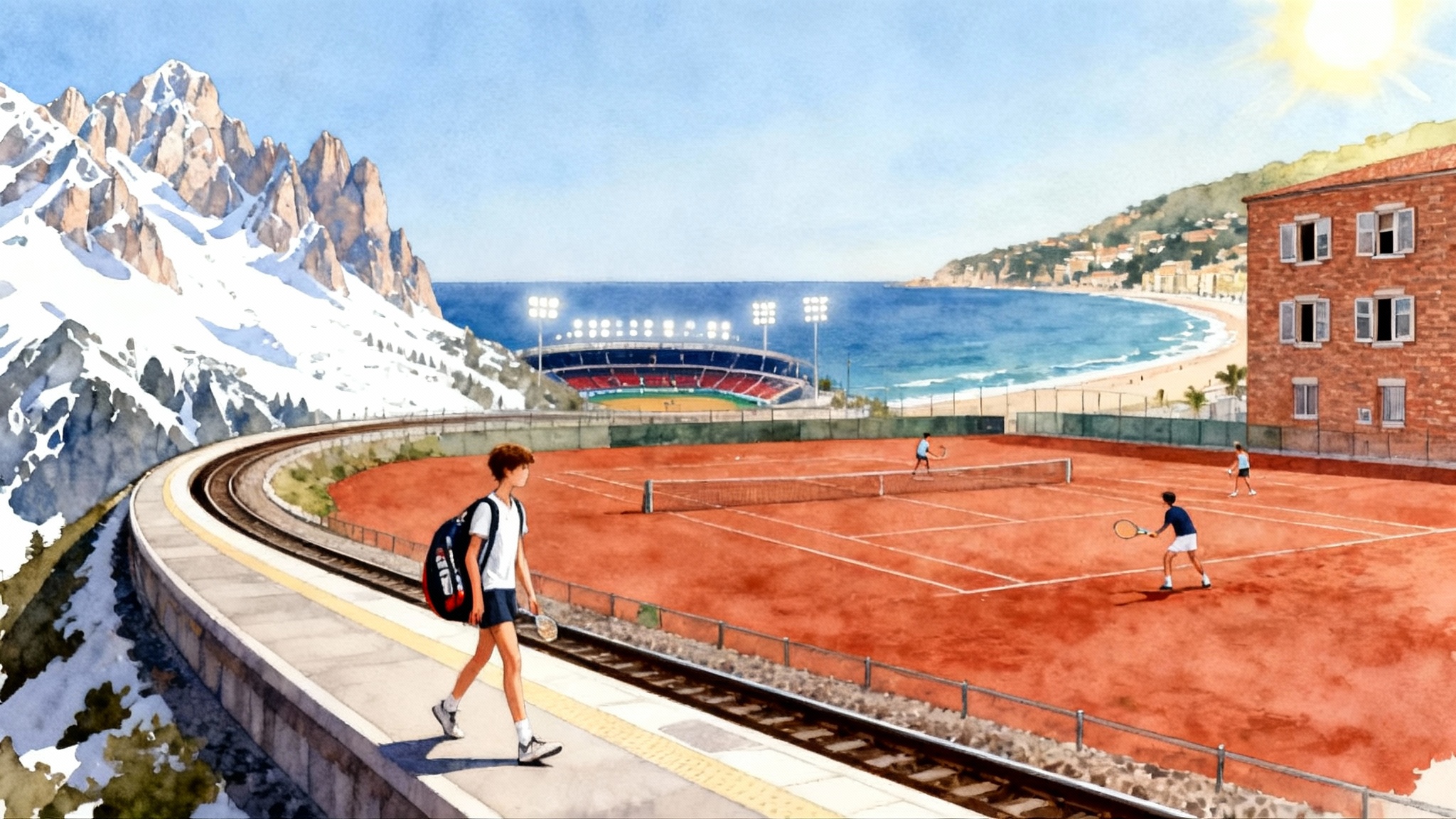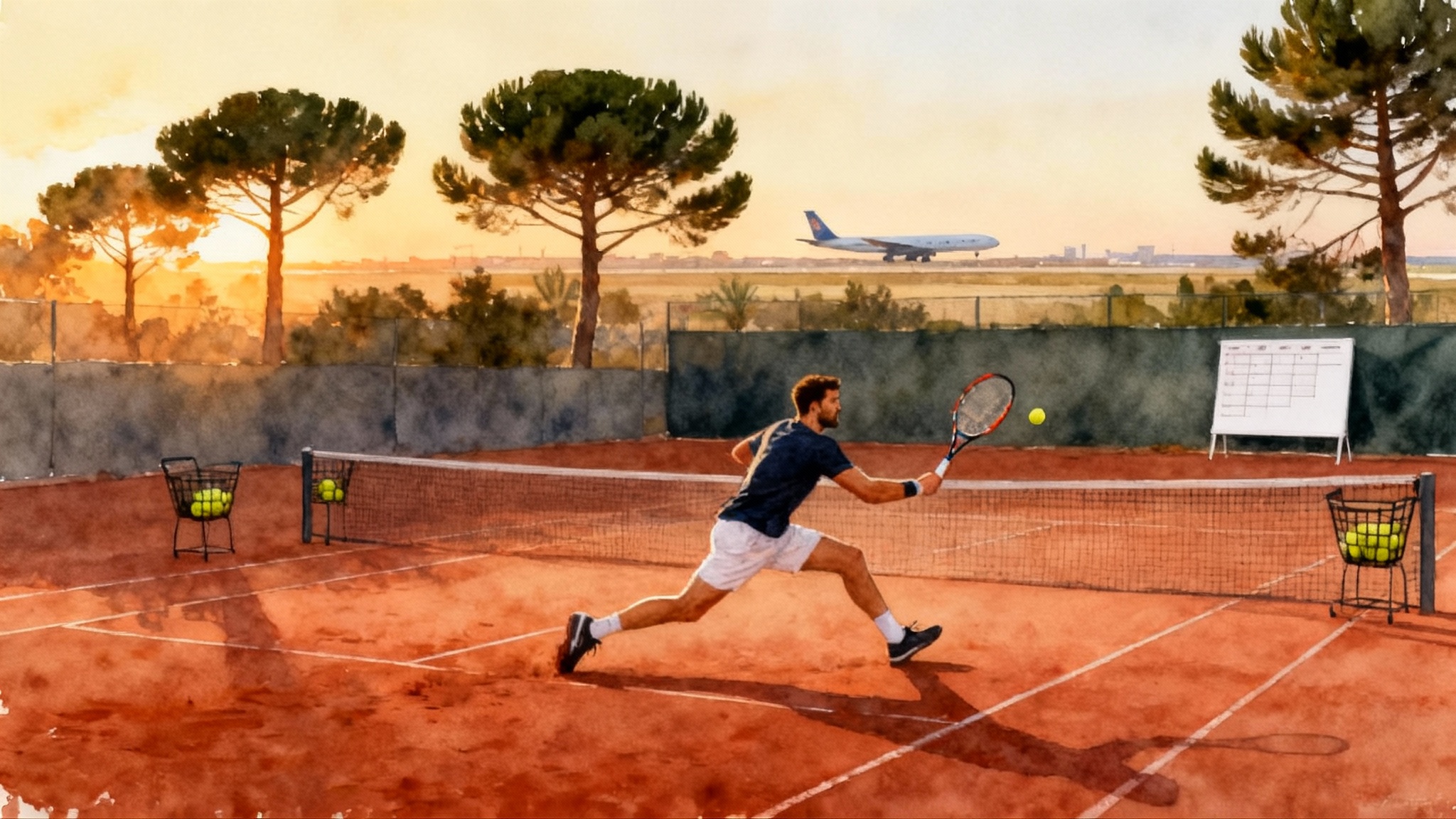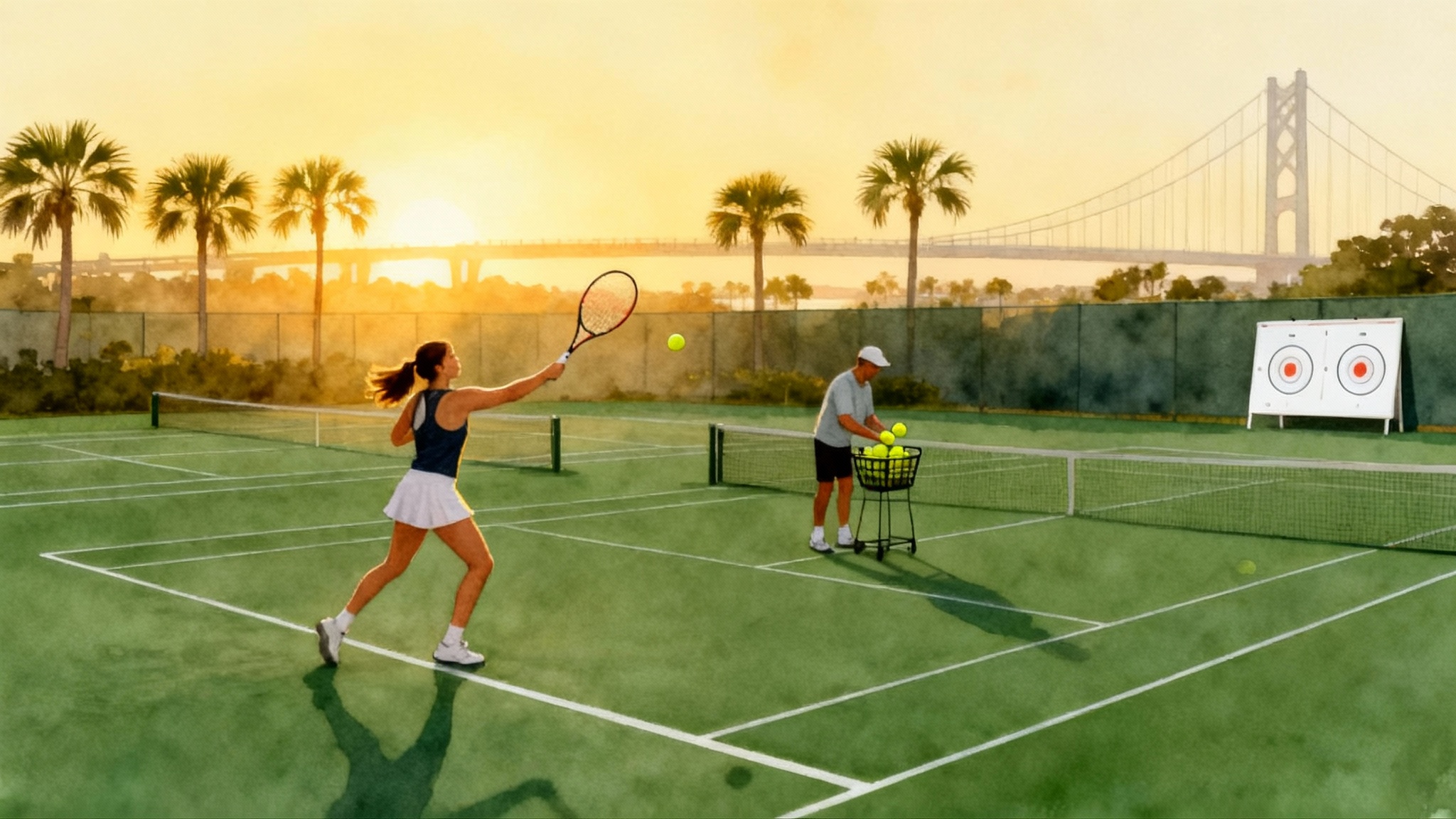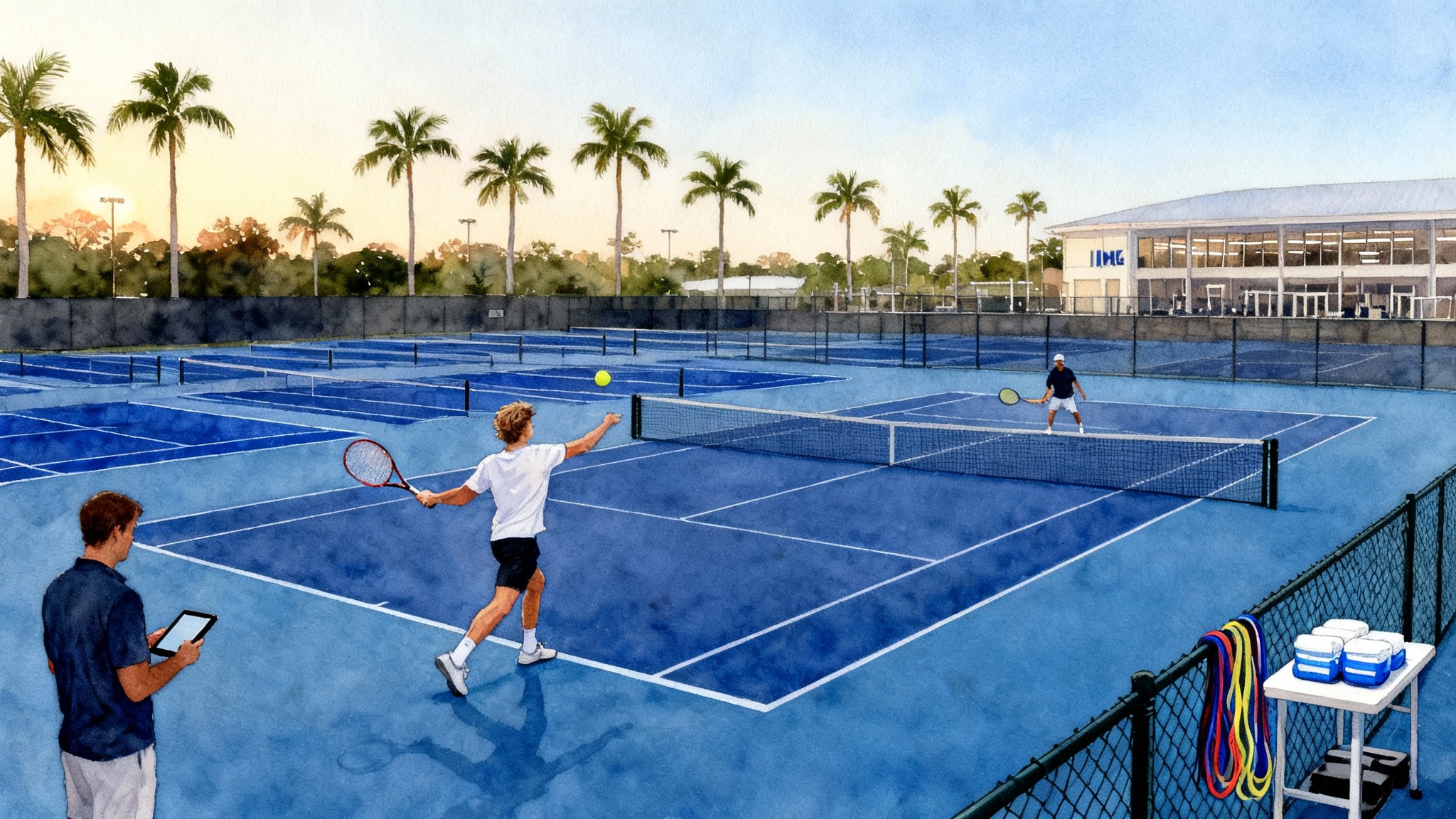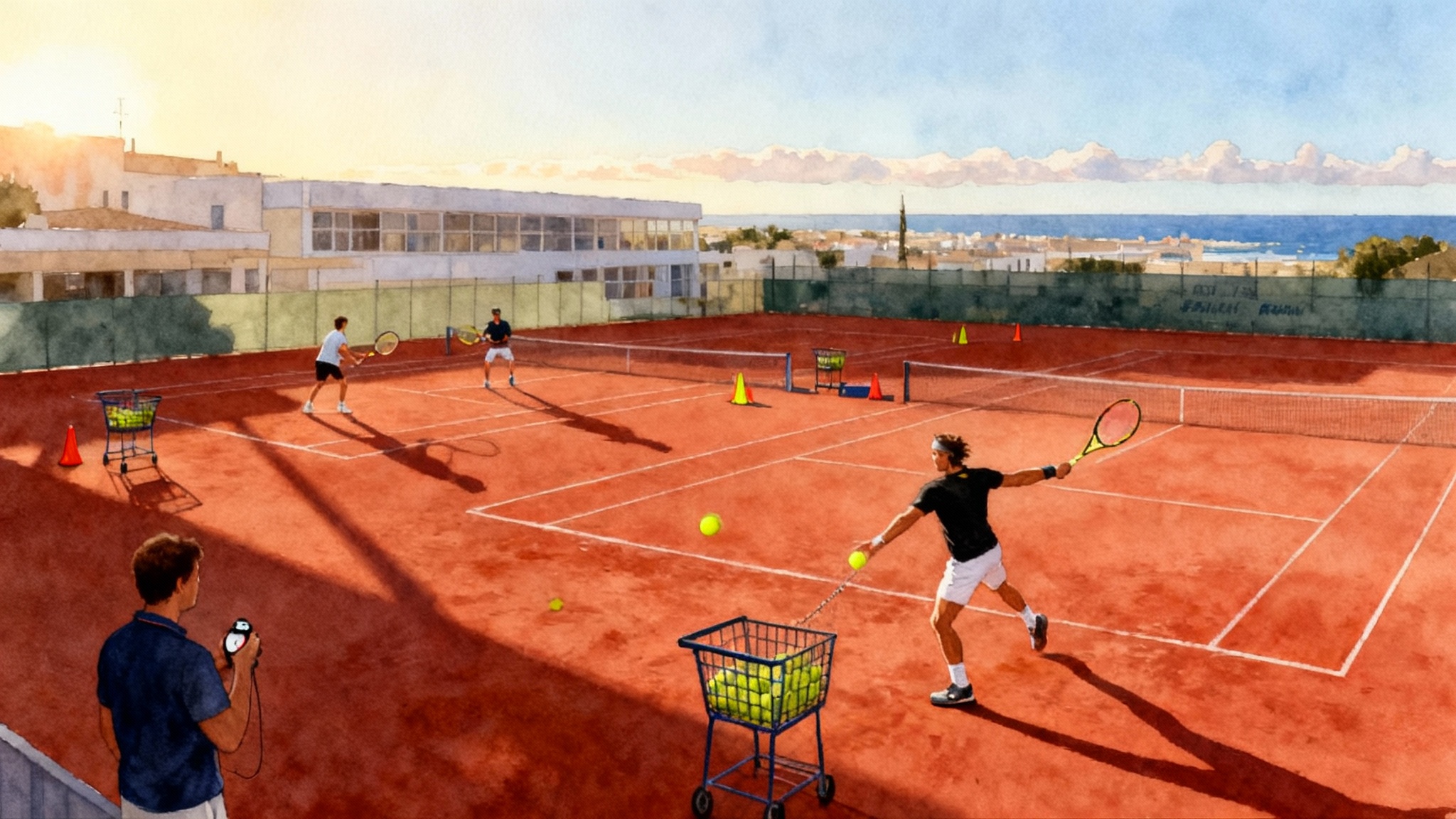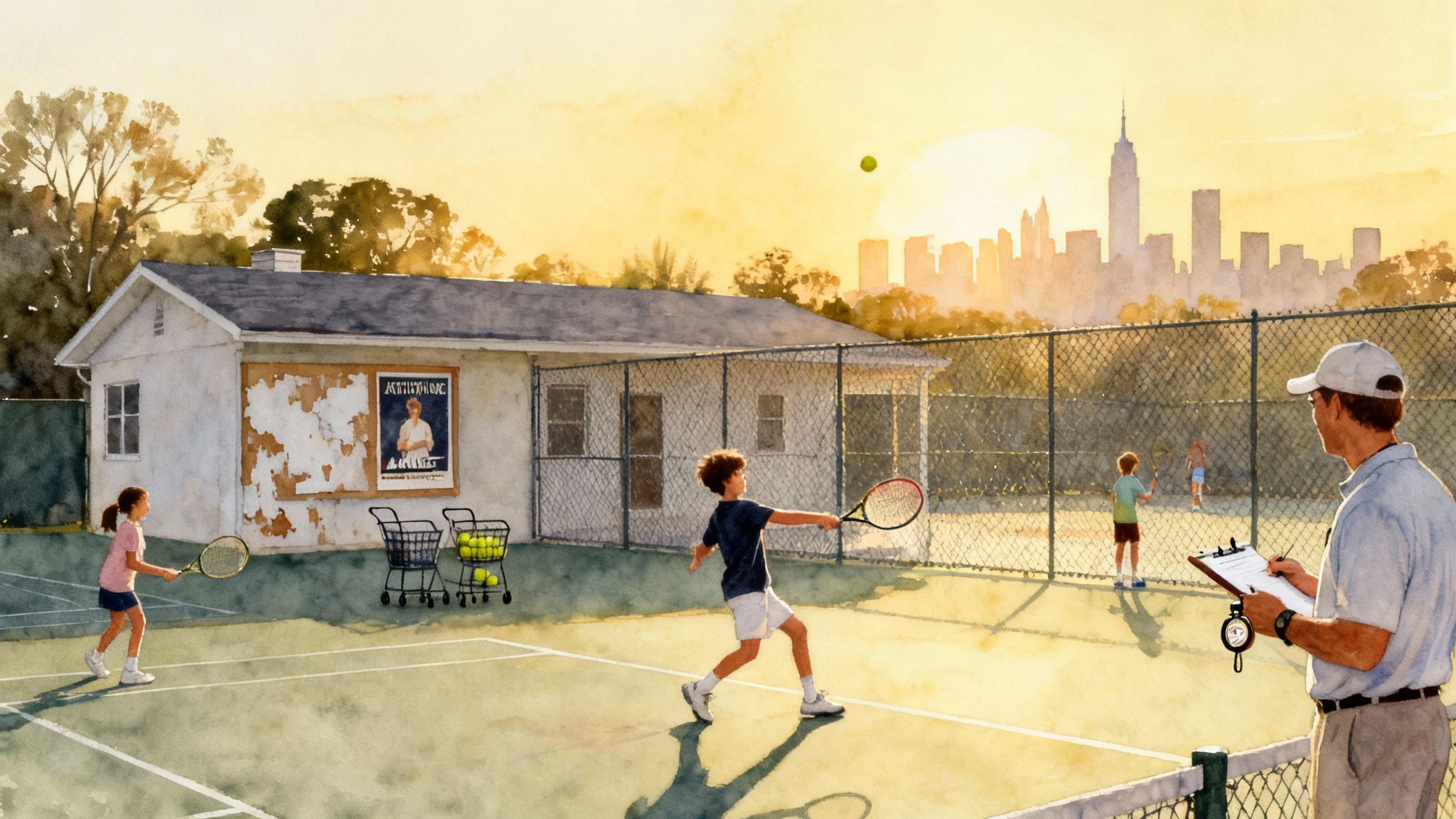From Krasnoyarsk to Cannes: How Elite and ALL IN Shaped Andreeva
Mirra Andreeva’s rise did not happen by accident. This case study maps her move from Elite Tennis Center in Cannes to ALL IN Academy and into a partnership with Conchita Martínez, with concrete takeaways families can use.

Why this case study matters
Every breakout looks sudden on television. In reality, Mirra Andreeva’s leap from top junior to a contender came from a clear sequence of environments, coaches, and decisions that built on one another. Think of it as a relay: Elite Tennis Center in Cannes ran the opening legs, ALL IN Academy carried the middle, and Conchita Martínez closed with pace and precision. This map shows what each stage contributed, then translates it into a checklist families can adapt.
For more before-and-after models, compare the principles in Sinner’s playbook at Piatti Academy and how Champ’Seed shaped Coco Gauff.
Foundation in Cannes: building points at Elite
Small training groups, two players per court per coach, and daily access to clay and Greenset made hiding impossible. Every rep was watched and purposeful. Within that structure, Mirra learned to change pace, use the drop shot as a disruptor, and value court craft over raw force. Elite’s school partnership mattered just as much, reducing stress when the calendar tightened so training could remain the main act.
Takeaway for families: a low coach-to-player ratio and a transparent school plan are multipliers that make each hour count.
The strategic switch to ALL IN Academy
By late 2023, the goal shifted from proving she belonged to competing for the biggest titles while protecting health and energy. The move to ALL IN Academy on the Côte d’Azur added depth: a modern campus, integrated fitness staff, and continuity when the lead coach traveled. The point was not a superstar guru, but a system that delivered consistent quality on ordinary days and synced with the travel team during peak weeks.
Takeaway for families: when your calendar spans continents, upgrade the base, not just the coach. You want a place that can deliver routine excellence and dovetail with your tournament staff.
What Conchita Martínez added
The final piece arrived in April 2024 when Conchita Martínez joined the team. Priorities were clear: crisper footwork, a more proactive forehand, and serve patterns that create early initiative. The duo described their blueprint during Indian Wells 2025 in a WTA feature on the duo.
Coaching principle: build from the ground up. Faster first steps widen shot options. A more dangerous forehand turns defense into neutral, neutral into offense. Decisions get easier because patterns produce higher percentage balls.
Results that justify the plan
In February 2025, Andreeva became the youngest WTA 1000 champion by winning Dubai, then backed it up three weeks later by defeating the world No. 1 to win Indian Wells. The Dubai result is documented in Andreeva’s Dubai 1000 breakthrough. Backing up a breakthrough at the next mandatory event is a stress test of systems: travel, training, and recovery holding up across surfaces and time zones.
How the environments targeted specific skills
- Point construction: Elite’s two-per-court model and daily clay exposure trained Mirra to choose shots, not just hit them. You see it in rhythm shifts and a purposeful drop shot that opens space.
- Variety with purpose: Under Martínez, variety became a setup, not a surprise, because improved footwork and a first-strike forehand kept opponents honest.
- Competitive habits: ALL IN’s integrated staff turned routines into systems. Themes did not reset when the calendar changed, and continuity became a competitive skill in a forty-five-week season.
When to change academies: a decision framework
Families often ask for a magic ranking number. Use these signals instead:
- Skill ceiling is capped by resources you cannot add
- Example: no access to quality practice sets at your level three to four days per week.
- Action: audit sparring depth, court availability, and sports science. If two of three are weak and cannot be fixed in 90 days, explore a move.
- Communication is reactive, not proactive
- Example: week-by-week plans with no 12-week theme or periodization.
- Action: request a written block plan with weekly technical themes, physical goals, and planned match volume.
- School plan is stressing the tennis plan
- Example: late-night coursework leading to poor quality morning sessions.
- Action: prioritize academies with formal partner schools and flexible timetables, such as Emilio Sánchez Academy Barcelona.
How to structure a multi-coach team that actually works
- Name a lead coach and define lanes. The lead owns the technical and tactical model, approves the calendar, and sets weekly themes. A base coach runs day-to-day when the lead travels. The fitness lead owns strength, conditioning, and testing. Everyone writes into one shared block plan.
- Use a shared playbook. Document three to five core patterns on each surface. Example for a crafty right-hander: serve T, backhand cross rally, forehand inside-in to take the net. Capture clips of two or three reps after key practices and store them for quick cueing.
- Schedule baton passes. Before each travel swing, run a three-day handover where the base coach leads and the lead coach shadows, then swap roles. This reduces confusion on site and keeps language consistent.
- Measure what matters. Track first-serve location spread, forehand plus-one conversion rate, and time to neutral from a defensive ball.
Balancing school and travel without losing either
- Choose a school solution first, then build the calendar. If academics are improvised, tennis eventually is too. Use accredited programs that allow morning training blocks and late-afternoon classes.
- Protect sleep like a performance variable. No screen commitments after night matches, and no early morning makeup classes the next day. Put it in writing with the school and the academy.
- One adult owns logistics. Whether a parent or team manager, one person books travel, handles accreditation, and keeps the weekly plan synced.
Designing a tournament plan that accelerates development without burnout
- Think in 12-week blocks. For ages 16 to 18, a common cadence is 3 tournament weeks, 1 recovery week, 2 training weeks, repeated.
- Calibrate upward pressure carefully. Stack opportunities only after proof of readiness. When your player beats two different styles in a week, schedule the stretch event next. When wins are narrow and messy, insert a training block.
- Cap flight hours, not just match count. Add a soft cap of one long haul per six weeks. If a second is necessary, open with two light training days to re-sync feet and timing.
- Match practice sets to the target event. Identify three partners who mimic likely seeds. Schedule two scored sets at match times the week before.
A simple copyable blueprint
Map environments to target skills. If you need point construction and rhythm shifts, prioritize clay access and small coach ratios, as in Mirra’s early Cannes phase. If you need consistency of routines and physical support across long swings, invest in an integrated base like ALL IN. If you need courage and clarity in big points, recruit a lead coach who sharpens feet and forehand choices the way Martínez did.
- Write the relay plan and share it. Who hands the baton to whom, when, and with what checklist.
- Test the system under stress. Back-to-back events, different climates, different surfaces. The goal is not perfection. It is repeatability.
Why this pathway worked
Each move answered a specific need. Elite taught the grammar of points and reduced academic friction. ALL IN provided depth and continuity across a long season. Martínez layered in the details that decide finals: faster feet, a forehand that starts the conversation, and the confidence to finish on her terms. The results followed across months and surfaces, not just one hot week.
Final thought
Families do not need Mirra’s talent to borrow her method. Choose environments that teach the skills your player lacks, build a team that can pass the baton cleanly, and measure progress by patterns you can repeat under pressure.
